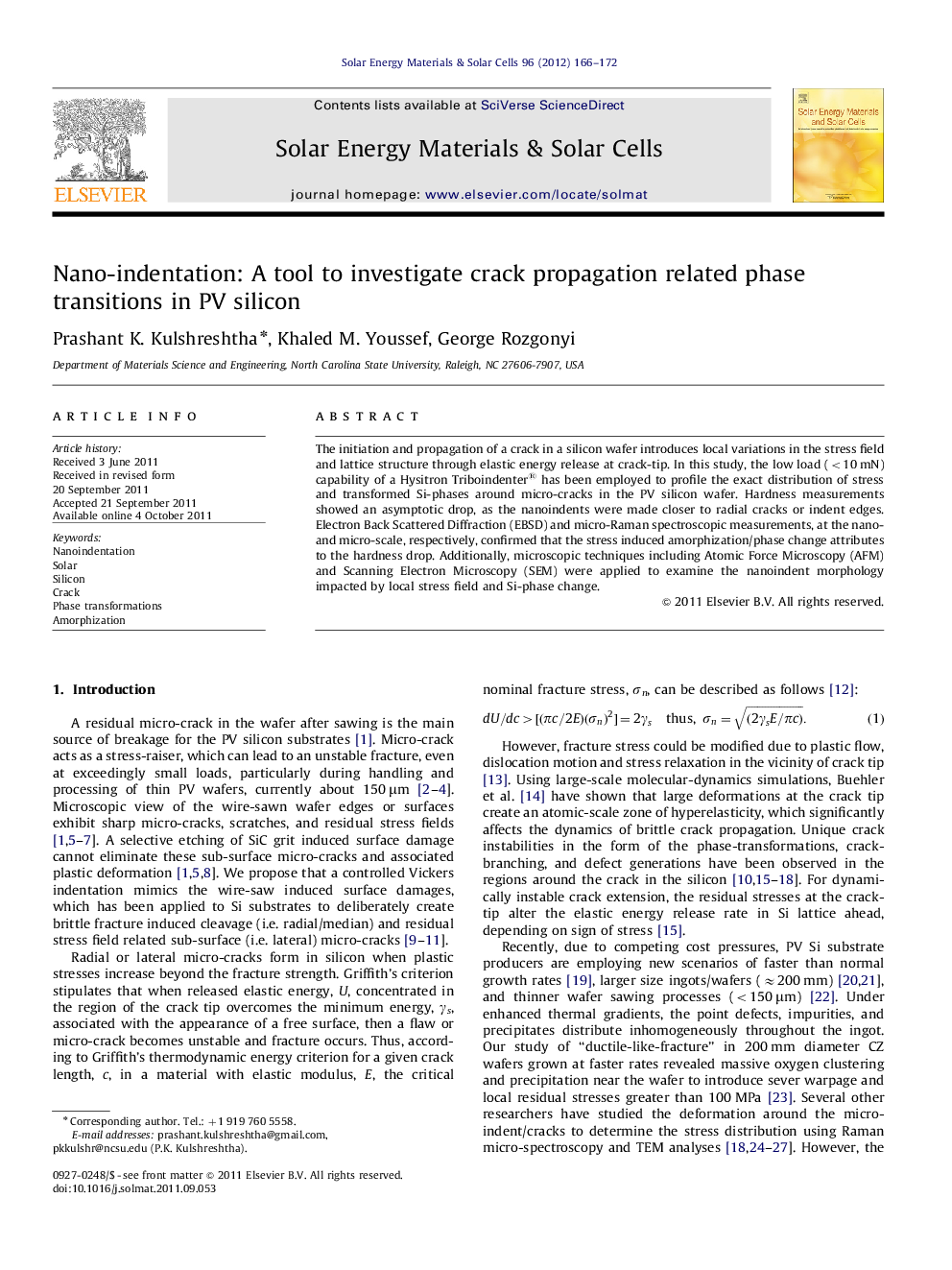| Article ID | Journal | Published Year | Pages | File Type |
|---|---|---|---|---|
| 79482 | Solar Energy Materials and Solar Cells | 2012 | 7 Pages |
The initiation and propagation of a crack in a silicon wafer introduces local variations in the stress field and lattice structure through elastic energy release at crack-tip. In this study, the low load (<10 mN) capability of a Hysitron Triboindenter® has been employed to profile the exact distribution of stress and transformed Si-phases around micro-cracks in the PV silicon wafer. Hardness measurements showed an asymptotic drop, as the nanoindents were made closer to radial cracks or indent edges. Electron Back Scattered Diffraction (EBSD) and micro-Raman spectroscopic measurements, at the nano- and micro-scale, respectively, confirmed that the stress induced amorphization/phase change attributes to the hardness drop. Additionally, microscopic techniques including Atomic Force Microscopy (AFM) and Scanning Electron Microscopy (SEM) were applied to examine the nanoindent morphology impacted by local stress field and Si-phase change.
Graphical Abstract.Figure optionsDownload full-size imageDownload as PowerPoint slideHighlights► Nanoindentation based profiling of stresses and Si-phases. ► Crack propagation induced phase transformations in PV Si. ► Ductile phase transformation of compressed Si. ► Amorphization volume around sharp cleavage cracks.
